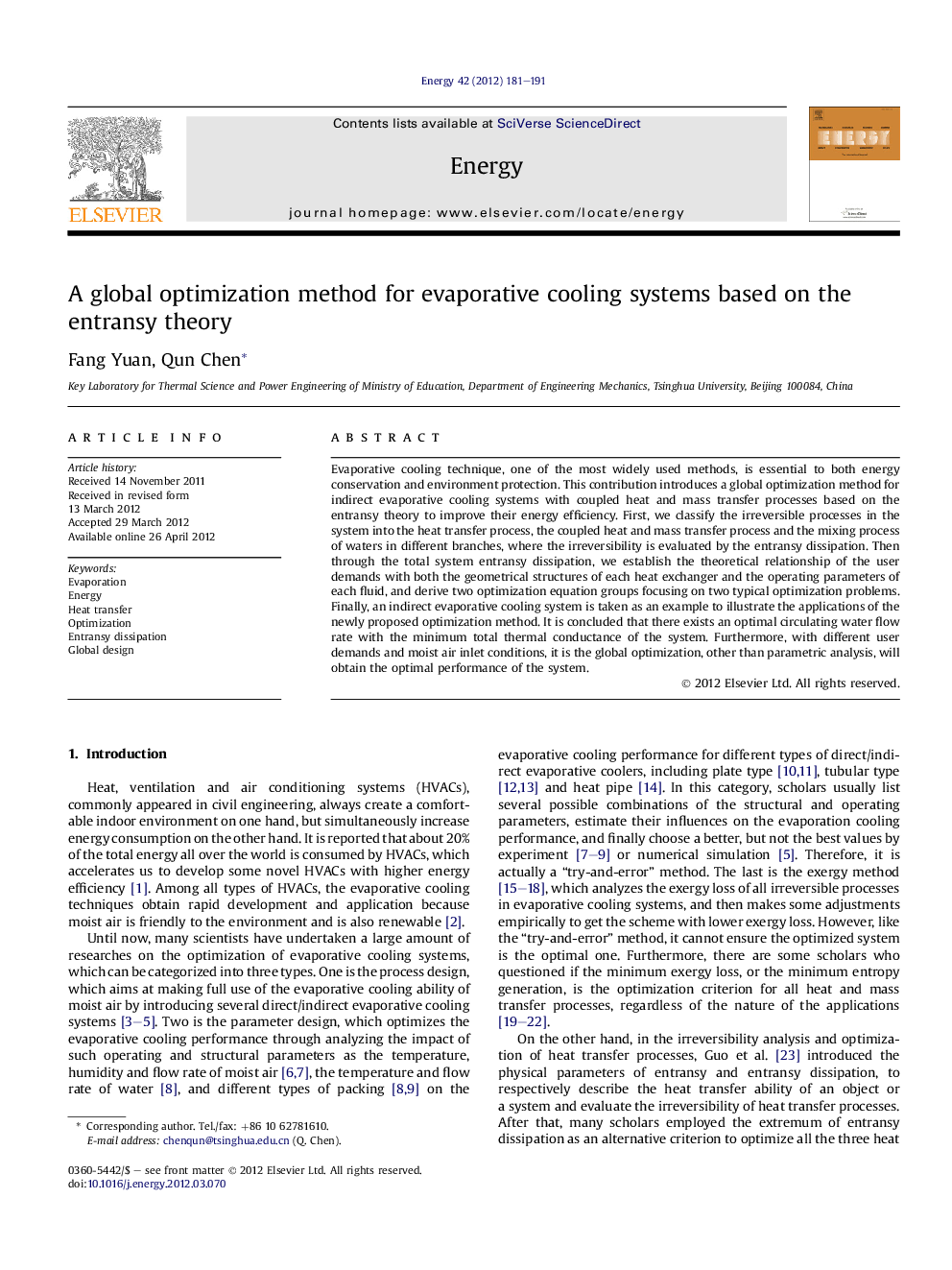| Article ID | Journal | Published Year | Pages | File Type |
|---|---|---|---|---|
| 1733812 | Energy | 2012 | 11 Pages |
Evaporative cooling technique, one of the most widely used methods, is essential to both energy conservation and environment protection. This contribution introduces a global optimization method for indirect evaporative cooling systems with coupled heat and mass transfer processes based on the entransy theory to improve their energy efficiency. First, we classify the irreversible processes in the system into the heat transfer process, the coupled heat and mass transfer process and the mixing process of waters in different branches, where the irreversibility is evaluated by the entransy dissipation. Then through the total system entransy dissipation, we establish the theoretical relationship of the user demands with both the geometrical structures of each heat exchanger and the operating parameters of each fluid, and derive two optimization equation groups focusing on two typical optimization problems. Finally, an indirect evaporative cooling system is taken as an example to illustrate the applications of the newly proposed optimization method. It is concluded that there exists an optimal circulating water flow rate with the minimum total thermal conductance of the system. Furthermore, with different user demands and moist air inlet conditions, it is the global optimization, other than parametric analysis, will obtain the optimal performance of the system.
► Introduce a global optimization method for evaporative cooling systems. ► Establish the direct relation between user demands and the design parameters. ► Obtain two groups of optimization equations for two typical optimization objectives. ► Solving the equations offers the optimal design parameters for the system. ► Provide the instruction for the design of coupled heat and mass transfer systems.
